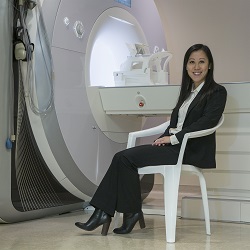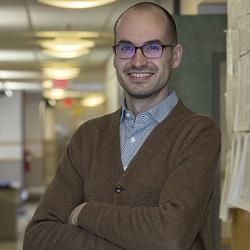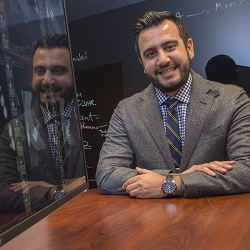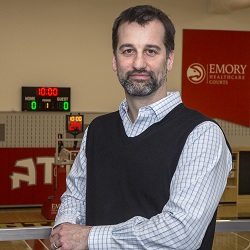New Research Faculty Bring Wealth of Talent
Jan. 31, 2018
Four new members of the Emory Radiology faculty are adding exciting dimensions to Emory Radiology’s commitment to Leading Through Innovation. Their research interests align well with high-priority areas of inquiry, from new approaches to understanding the impact of policy mandates on health care utilization to novel applications of magnetic resonance imaging for disease and injury detection.
The future of Radiology will be determined in large part by the innovative research carried out today. The four faculty members that have joined our research teams recently not only complement our existing faculty and research areas, but broaden the scope of expertise of our core team to some very new cutting-edge areas. Their contributions will help shape the future of the department’s research efforts and change the practice of radiology and patient care.
Candace Fleischer, PhD
 Dr. Fleischer, assistant professor, has expertise in biomedical spectroscopy and imaging, and she is pursuing three novel lines of investigation: 1) exploring nuclear magnetic resonance (NMR) capabilities to identify inflammation-related biomarkers in tumors; 2) applying an improved method for non-invasively measuring brain temperature in patients with cerebrovascular and cardiovascular injury; and 3) developing new magnetic resonance spectroscopy (MRS) analysis methods. Read more here.
Dr. Fleischer, assistant professor, has expertise in biomedical spectroscopy and imaging, and she is pursuing three novel lines of investigation: 1) exploring nuclear magnetic resonance (NMR) capabilities to identify inflammation-related biomarkers in tumors; 2) applying an improved method for non-invasively measuring brain temperature in patients with cerebrovascular and cardiovascular injury; and 3) developing new magnetic resonance spectroscopy (MRS) analysis methods. Read more here.
Michal Horný, PhD
Fairness, accessibility, complexity, and affordability are hot topics when it comes to health care in the United States, which is  why a scholar from the Czech Republic is devoting his career to studying them at Emory.
why a scholar from the Czech Republic is devoting his career to studying them at Emory.
Michal Horný, assistant professor and health economist by training, is focused on measuring how specific health policies or financial incentives influence the utilization of health care, and ultimately, health outcomes. Read more here.
Amir Pourmorteza, PhD
 Amir Pourmorteza is a biomedical engineer by training, an artist by design, and an innovator by nature, which makes imaging sciences the perfect fit.
Amir Pourmorteza is a biomedical engineer by training, an artist by design, and an innovator by nature, which makes imaging sciences the perfect fit.
“I like to build things,” the assistant professor says simply. “As an engineer, I want to come up with an idea, create a prototype, and then go from bench to bedside, that is refine the innovation so it ultimately improves the way we care for patients. Imaging is especially interesting because it’s visual. It has an artistic edge to it. You can see what you’re doing and see in pictures the results of your innovations.” Read more here.
David Reiter, PhD
When asked to explain his research, David Reiter’s short answer is this: “I use an incredibly versatile imaging tool to bridge voids in our ability to understand, detect, diagnose, and treat injury and disease.”
in our ability to understand, detect, diagnose, and treat injury and disease.”
Sounds simple enough, but his work is quite complex. One aspect of Dr. Reiter’s research is focused on muscle, specifically the muscle’s dense network of tiny blood vessels, or microvasculature. He’s investigating ways MRI can measure the extent to which blood flow within the microvasculature affects muscle function and metabolism. This technical pursuit is important for understanding and treating impaired mobility due to metabolic diseases like diabetes, injury or other trauma, and even aging. Read more here.



